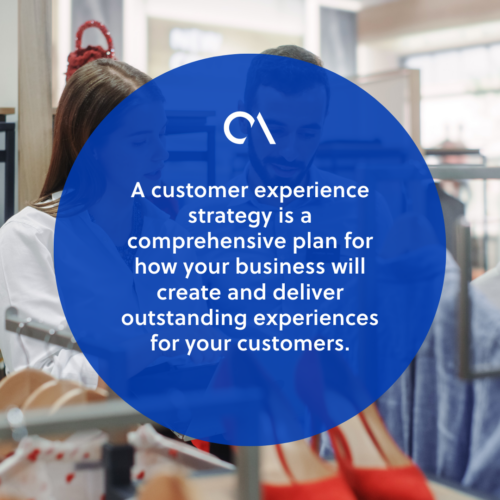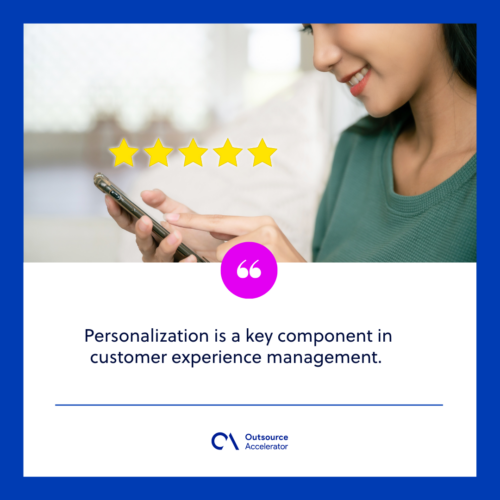How to craft a winning customer experience strategy

Providing seamless and exceptional customer experience is paramount for businesses looking to thrive in a competitive market.
A well-defined customer experience strategy is a roadmap to understand and exceed customer expectations at every touchpoint.
It involves aligning business goals with customer needs, leveraging data and insights to drive informed decisions, and implementing personalized interactions. The end goal is to create lasting impressions.
In this article, we’ll explore the fundamentals of a successful customer experience strategy, highlighting key elements, best practices, and benefits.
What is a customer experience strategy?
A customer experience strategy is a comprehensive plan for how your business will create and deliver outstanding experiences for your customers.
It’s a strategic approach that helps you stay focused on delivering great service and boosting the value of the customer relationships you build.
The goal is to create meaningful customer relationships by fulfilling their needs and interests. This means you need to understand what they want from your business, what they think about it, and how they feel about it.
A good customer experience strategy also supports sales and marketing efforts by providing a consistent and positive experience across all touchpoints.
Looking for an outsourcing partner to transform your customer experience processes? Contact MCI.

Customer experience vs. Customer service
Customer experience and customer service are related concepts but have distinct differences in their scope and focus:
| Customer experience | Customer service | |
| Definition | Overall customer perception of your brand | The assistance provided to address customer problems, inquiries, or issues |
| Scope | Covers entire end-to-end customer journey, including across multiple channels | Focuses on addressing customer needs and concerns |
| Emphasis | To create a holistic and long-lasting impression | Problem-solving of customer issues |
| Involvement | Involves various departments and teams across the organization | Customer support team |
| Measurement | Metrics include:
| Metrics include:
|
Best practices for developing a customer experience strategy
Developing an effective customer experience strategy requires careful planning and consideration.
Here’s a step-by-step guide to help you create a robust strategy that resonates with your customers:
Define your objectives and goals
Identify your business objectives and align them with your customer experience goals. This helps you determine what needs to be accomplished, how success will be measured, and what resources are required.
These objectives should be consistent across all channels for a seamless experience.
Understand your customers
Create detailed customer personas that outline their demographics, preferences, needs, and pain points. This insight forms the foundation for tailoring your strategy to meet their specific requirements.
Map the customer journey
The customer journey is the path they take through their interactions with a company. Visualize your customer’s journey through a map that helps you see how your current touchpoints work.
Develop metrics for each stage of the journey so you can track progress over time and identify areas of improvement.
Gather customer feedback
Gather feedback from current and potential customers. Use surveys, reviews, and direct interactions.
When collecting feedback, be sure to ask about specific touchpoints:
- When did they first hear about you?
- What drew them to your product over others?
- How did they feel once they started using it?
This approach ensures you address real customer needs.
Set key performance indicators (KPIs)
Determine the metrics that will gauge the success of your customer experience strategy. Ensure you also set KPIs for when certain milestones have been achieved or when changes need to be made.
Some common metrics include:
- Net promoter score
- Customer satisfaction
- Customer lifetime value
Align cross-functional teams
The process starts with getting all stakeholders involved in the discussion. Involve various departments like marketing, sales, and customer support.
Make sure everyone is part of the conversation from day one so they understand how their work fits into the bigger picture. Collaboration ensures a cohesive approach and consistent customer experience.
Empower employees
Train and empower your employees to deliver exceptional customer service.
Employees must understand what is expected of them and how their actions impact the customer experience. Ensure they are well-trained and knowledgeable about your products and how to deliver them.
They must be able to handle inquiries, resolve issues, and create positive interactions.
Design personalized experiences
Personalization is a key component in customer experience management. This requires understanding your customers’ needs, expectations, and values to create a tailored solution that meets their requirements.
Make it easy for customers to do business with you, no matter their chosen method or channel.

Implement technology solutions
Leverage technology to enhance the customer experience. Incorporate tools like CRM systems, chatbots, and analytics platforms to streamline processes and provide efficient support.
Technology solutions can help you understand your customers better, giving them what they need at the right time, place, and level of personalization.
Continuously improve
Every company has different goals, resources, and capabilities for improving its customer experience.
Monitor and analyze feedback, KPIs, and trends regularly. Use these insights to refine your customer experience strategy over time.
A commitment to continuous improvement ensures your strategy stays relevant.
Why does a customer experience strategy matter?
A customer experience strategy holds profound significance for businesses in today’s competitive landscape.
It shapes the way customers perceive and interact with your brand, directly influencing their loyalty, advocacy, and overall satisfaction.
Here’s why a customer experience strategy matters:
It creates loyal customers
When customers consistently have positive interactions and experiences with your brand, they’re more likely to remain loyal over time.
They develop an emotional attachment to your brand and bring it close to their identity. This kind of loyalty leads to repeat purchases and a higher customer retention rate.
It sets you apart from the competition
Products and services can often be similar in today’s crowded market. An exceptional customer journey makes your business stand out from the rest.
Your customers will appreciate your efforts and come back for more. A strong customer experience strategy thus provides a unique competitive advantage.
It makes your brand look good
A strong customer experience strategy boosts your reputation among current and prospective customers. Positive experiences create a lasting impression, leading to strong brand perception and increased customer trust.
It produces advocates
A good customer experience strategy produces satisfied customers who become advocates for your brand. The happier they are, the more likely they will recommend your services to friends, family, and colleagues.
This results in organic word-of-mouth marketing and increased customer acquisition.
It impacts your bottom line
A customer experience strategy directly impacts your bottom line. Satisfied customers are more likely to spend more, making higher-value purchases and becoming long-term patrons.
Increased revenue and profitability are something every business owner wants.







 Independent
Independent




